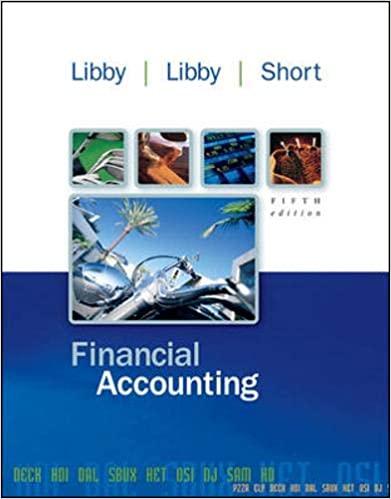Question
Sue recently became division manager of the TG division of United Amalgamated (UA). The TG division has been operating for number of years. During Sues
Sue recently became division manager of the TG division of United Amalgamated (UA). The TG division has been operating for number of years. During Sues first year, she continued what had previously been done at the TG division, and performance during Year 1 was right in line with results for the division in previous years.
In her second and third years, Sue convinced UA to allocate significant amounts of additional capital to the TG Division, pointing out that the division has for many years been earning a return in excess of the cost of capital. When her division received additional capital on January 1, Year 2 they invested in operating assets that same day, and started to generate earnings from the additional investment immediately. Similarly, when the TG division received additional capital on January 1, Year 3 they invested and started to generate earnings immediately.
In order to keep all of the calculations simple, assume
1) UA has no debt and therefore interest expense is zero. Also, UA is not subject to income tax, so tax expense is zero. Therefore, NOPAT = Net Income
2) The Total Investment column below represents the investment in the TG Division. For Sues first year (and many years before) the investment has been $100. In Year 2, UA invested another $100 in the TG Division. In Year 3, UA invested another $100.
3) The additional capital invested by UA in year 2 increased division income by $5 per year. The additional capital invested in Year 3 increased division income by another $4 per year.
The results for the TG Division for Years 1, 2, and 3 are summarized below.
Net Total
Year Income Investment
1 15 100
2 20 200
3 24 300
1. Focusing only on Net Income generated by the TG Division, evaluate Sues performance as Division manager during these three years.
2. Focusing on return on investment (ROI), evaluate Sues performance as Division manager during these three years. Specifically,
a) Calculate ROI for the TG Division for Years 1, 2, and 3, where ROI =Net Income / Total Investment
b) Calculate ROI for the incremental investments in years 2 and 3, where Incremental ROI = Incremental Net Income / Incremental Investment
3. Focusing on EVA, evaluate Sues performance as Division manager during these three years. Assume the weighted-average cost of capital (WACC) for UA is 10%.
a) Calculate EVA for the TG Division for Years 1, 2, and 3, where
EVA= NOPAT (WACC * Investment)
b) Calculate EVA for the incremental investments in years 2 and 3, where
Incremental EVA = Incremental NOPAT (WACC * Incremental Investment)
4. Discuss the differences in your evaluation of Sues performance based on Net Income, Return on investment, and EVA
Step by Step Solution
There are 3 Steps involved in it
Step: 1

Get Instant Access to Expert-Tailored Solutions
See step-by-step solutions with expert insights and AI powered tools for academic success
Step: 2

Step: 3

Ace Your Homework with AI
Get the answers you need in no time with our AI-driven, step-by-step assistance
Get Started


